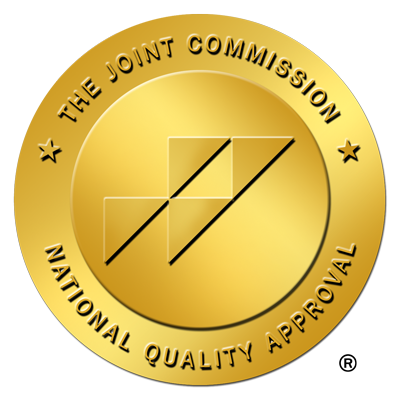When thinking about porn and your teen, it’s important to be aware and be concerned, because watching porn has negative consequences, which we’ll discuss below. However, it’s also important not to get too worked up or freaked out about it. We say this for several reasons, but the main reason is that with your guidance, your teen can avoid and/or prevent the negative consequences of watching porn. Spoiler alert: watching porn as a teen is not associated with increased risk of mental health issues, mental illness, or common mental health diagnoses such as anxiety or depression.
Why do we say not to freak out about it? For three primary reasons.
First, porn is a 97-billion-dollar industry worldwide that occupies a whopping four percent of the internet. In the U.S. alone, porn generates 10-12 billion dollars of revenue each year. Second, teens in the U.S. are online frequently. In a survey published in 2023, data from the Pew Research Group shows that the percentage of teens who report frequent internet use has increased dramatically since 2014-2015.
Teens: Time Spent Online, 2014-2023
2014-2015:
- Several times a week: 8%
- Once a day: 12%:
- Several times a day: 56%
- Almost constantly 24%
NET DAILY USE: 92%
2022:
- Several times a week: 3%
- Once a day: 3%:
- Several times a day: 48%
- Almost constantly 46%
NET DAILY USE: 97%
2023:
- Several times a week: 3%
- Once a day: 4%:
- Several times a day: 47%
- Almost constantly 46%
NET DAILY USE: 96%
That data shows us that the number of teens who report being online almost constantly increased over 90 percent between 2014-2015 and 2022, and that number remained relatively constant from 2022 to 2023.
Those are two reasons we say not to freak out the fact your teen may have seen porn online: almost all teens are online every day, and porn occupies a disproportionately large percentage of the internet. The third? You have a direct impact on how porn affects them, which we’ll discuss below. First, though, we’ll look at the latest information on teens and online porn viewing.
How Many Teens See Porn?
Most teens are online every day: parents understand that. But most of the time, they’re online for school, entertainment, or socializing with friends. How many actually see porn online? And how young are they when they first see it?
A report published in 2023 by Common Sense Media called “Teens and Pornography” shows the following data, based on a nationwide survey of teenagers age 12-17:
- Average age first seeing porn online: 12
- Reported seeing porn before age 10: 15%
- Intentionally sought out porn: 44%
- Accidentally saw porn: 58%
- Accidentally saw porn in past week: 63%
- Felt okay about watching it: 67%
- Felt ashamed after watching it: 50%
- Intentional viewing by gender:
- Boys: 52%
- Girls: 36%
There are just over 26 million teens age 12-17 in the U.S., which means that almost 3.9 million teens in this survey saw porn online before age 10, and over 16 million reported seeing porn online accidentally in the week before answering the survey.
Accidentally? We chuckle, too – but in this case, we’ll take their word for it. The point here is that whether they seek it or not, teens are likely to see porn online at some point during adolescence, and most will see it before they reach adolescence, by age 12. Therefore, don’t freak out that it happens, but be concerned about the consequences.
The authors of a recent study called “Problematic and Non-problematic Pornography Use and Compulsive Sexual Behaviors Among Understudied Populations: Children and Adolescents” concluded the following:
“Pornography use is not reliably linked with mental health problems. However, pornography use is linked with objectification processes, sexual permissiveness, and risky sexual behavior.”
That’s why it’s important for parents to understand the dangers of watching porn. The study above indicates that chronic, excess consumption of porn by teens leads to problems, whereas occasional, infrequent exposure to porn does not increase risk of problems with objectification, permissiveness, and risky behavior.
The Potential Consequences of Watching Internet Porn
Research conducted in 2012 and published in a paper called “The Impact of Internet Pornography on Adolescents: A Review of the Research” explores the impact of watching porn on teens. The study surveyed research conducted between 2005 and 2012, with the goal of determining the “impact of watching internet pornography on sexual attitudes, beliefs, behaviors, and sexual aggression.”
Here’s what they found.
Fifteen Possible Consequences of Watching Porn as a Teen
Watching pornography or sexually explicit material online can:
- Lead to artificial ideas about sex and unhealthy attitudes about relationships.
- Cause teens to see sex as only physical, casual, or superficial, rather than based in relationship and mutual affection.
- Result in teens developing a strong mental preoccupation with sex and sexual activity, to the detriment/exclusion of other ideas/thoughts/activities.
- Cause acute arousal in teens when they think about what they’ve seen, which can reinforce a disruptive preoccupation with sex.
- Cause teen boys to believe sex/sexiness/sex appeal is the only metric by which to judge how attractive a woman is. They may think women exist only to fulfill their sexual desires.
- Cause teen girls to view mature women as sexual objects.
- Increase risk of early/risky/permissive sexual activity.
- Increase chances of engaging in any time of sex, group sex, anal sex, oral sex, or sex with a non-romantic friend or acquaintance.
- Elevate risk of engaging in risky, unprotected, physically dangerous sexual activity.
- Elevate risk of sexual aggression in boys at risk of aggressive behavior, compared to teen boys at risk of aggressive behavior who don’t watch porn.
- Increase likelihood of teen boys engaging in sexual harassment later in adolescence.
- Cause teen boys and girls to develop ideas of sexuality based on what they see in porn, and imitate that behavior and those ideas in sexual situations later in life.
- Cause teen boys to develop false concepts about sexual performance, develop anxiety about their ability to recreate what they see in porn, and feel inadequate when they can’t.
- Result in teen girls negative comparing themselves to the women they see, which can make them feel unattractive/inadequate.
- Lead to impaired cognitive control and decrease ability to regulate behavior, which can lead to dangerous/risky sexual activity.
The research team emphasized that based on their results, images have a more powerful impact on behavior than words. They hypothesize that this how and why sexually explicit/graphic material viewed online may have a stronger impact than lecture or text-based education about sex and sexuality. The pictures trigger innate drives that are more powerful the information they receive in a text-based, classroom milieu.
What Parents Can Do
The most important thing parents can do is engage in open, honest dialogue with teens about pornography, sex, and sexuality. And it’s not as difficult as most parents might think. It’s essential to accept the fact that sex is part of being human. While some people are asexual and aromantic, most people develop a sexual identity during their teenage years. It’s part of the job of parenting to help teens manage this process in a healthy manner.
With regard to explaining porn, it’s similar to explaining things from movies, TV shows, or deconstructing lyrics in pop songs:
Parents need to separate fact from fiction.
The first thing teens need to understand is that porn is not reality. Most people don’t engage in endless athletic sex. And while people make all kinds of choices about sexual partners, the most common type of sex is between two people. In addition, a helpful article in Psychology Today points out that while the average male penis is 5.8 inches long, the average porn penis is 8 inches long. In addition, 85 percent of female porn performers have breast implants, and close to 100 percent of the images in porn videos are artificially enhanced or altered in some way.
Teens need help identifying what’s real and what isn’t, from people who actually know what’s real and what isn’t. If parents don’t play a role in helping teens understand these things, then teens will seek information elsewhere – like friends, older siblings, or friends’ older siblings – who are just as likely to give them inaccurate information as accurate information, which can cause problems.
That means that if teens watch porn and accept it as what people really look like and how people really do things, then they may develop problems with objectification, permissiveness, and risky behavior. However, if a responsible adult – like a parent – intervenes and frames sex and sexuality in real human terms – not those designed to maximize profit and viewership – then teens can develop their sexuality and sexual identity in a manner consistent with their personal and family values.
We’ll end with insight from the authors of the study on consequence of porn on teens we cite above:
“The long-term impact of these effects and trends requires further investigation. Given that children and adolescents are widely considered the most vulnerable audiences to sexually explicit material, and that the rate, manner, and type of exposure is categorically different from that of pre[1]Internet generations, this is certain to be a relevant area of study for some time.”
And to answer the question we pose in the title of this article: it depends. If parents can separate what’s real from what’s not, and explain the role of sex and sexuality in real and clear terms, then they can mitigate the potential negative impact of watching porn. However, as the research shows, excess, unrestricted consumption of porn can lead to a wide range of negative consequences for teenagers.




